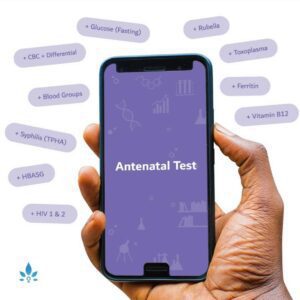How to Spot Food Poisoning in Your Child


Food poisoning can be an uncomfortable and prolonged discomfort for adults, but in an infant or child, food poisoning can be a serious condition. Food poisoning typically occurs when an infant or child consumes food or drink that is contaminated with bacteria.
Symptoms associated with infant and child food poisoning include:
- Body aches
- Chills
- Diarrhea
- Fever
- Headache
- Nausea
- Stomach cramping
- Vomiting
- Weakness
Recognizing food poisoning
Food poisoning can be difficult to distinguish from a stomach virus, which is spread when children touch a contaminated surface and put their fingers in their mouths. One of the ways to tell the difference is to consider when your child’s symptoms began. For example, most infants and children will have symptoms within 1-2 hours of eating.
Some of the common food poisoning causes include:
- A bacteria commonly spread through unpasteurized milk, contaminated water, or raw or undercooked poultry.
- E.coli. A bacteria transmitted in food or water contaminated with a small number of cow feces or when a child’s hands touch feces and are not washed before eating.
- Norovirus. Contaminated food, utensils, and surfaces cause this food poisoning type. The virus is fast-spreading and is common in daycare environments.
- Salmonella is a bacteria present in undercooked foods such as eggs, poultry, and meats. Raw milk, dairy products, and seafood can also house the bacteria. In addition to the earlier-mentioned child food poisoning symptoms, salmonella food poisoning can cause small pink spots on a child’s skin as well as a fever, diarrhea, and stomach cramping.
- In most cases, food poisoning will subside with time—as fast as one day or as long as a week. Treatments can include replacing lost fluids from vomiting with oral rehydration solutions and applying cool compresses. Infants under 12 months of age can be given small amounts of oral rehydration solution, breast milk, or formula.
However, there are some infant food poisoning symptoms that indicate the need to call your child’s doctor to determine if emergency treatment or other interventions are needed. These symptoms include:
- Blood in the stool
- Fever greater than 103 degrees Fahrenheit
- Severe dehydration symptoms, such as decreased urination, excessive thirst, or extreme fussiness
- Severe stomach pain or headaches
- A sudden, unexplained rash
- A swollen, hardened stomach
- Vomiting blood
- Vomiting that has not subsided in three days
If your child has other concerning symptoms or you are unsure if additional medical treatment is required, contact your child’s physician.
Sources:
- Academy of Nutrition and Dietetics
- Food Poisoning: Who’s At Risk?
KidsHealth - Food Poisoning.
Nationwide Children’s - Food Poisoning.
University of Minnesota Medical Center - Food Poisoning (Child, Under 2 Yr).
Powered by Bundoo®












































